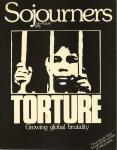It has been estimated that if things continue in the direction they are now going, by the year 2000 Christians of the Eastern Orthodox churches together with churches in the rest of the Western world will make up only about 40 percent of the world Christian population. The nations and cultures which these churches represent are in an apparent declension that makes their past splendor irretrievable. The Western zenith has passed, and no one really knows where things are headed from here.
Whether it need be so or not is a matter of debate, but the fact remains that Orthodox and Western Protestant and Catholic churches are declining at least as rapidly as the nations and cultures they live in. What, then, will be the viability of these churches by the year 2000? And do we have any hints at what will be the nature of the churches representing the remaining 60 percent of the Christian world by the same date?
I was recently among a hundred or so church leaders in Britain who reviewed a film presented by Dr. Walter Hollenweger of Selly Oaks College, Birmingham. Dr. Hollenweger -- probably the foremost authority on current world wide Pentecostal movements -- was helping us uncover some of the social and religious forces underlying the advances during this decade of certain Christian missionary movements such as the popular Chilean Pentecostal Church (Pentecostalism being one of the fastest growing missionary forces in the Third World today). What we saw was a multifaceted and authentic gospel spreading rapidly among Chilean peasants. The film was in German so some of its impact was lost to me in translation, but there was unmistakable evidence of an indigenous Christian movement powerfully at work with the gospel of Jesus Christ. My reaction was mild: I was merely distressed by the unfamiliar manner of conduct in worship and the simple social behavior of the Chilean Christian converts. Most of my fellow viewers, however, were greatly repelled by the bizarre sights and noisy sounds of the film.
How many of us have heard of the Three-Self Movement in today’s China?
The Chinese have had three distinct waves of Christian evangelism cross their borders since New Testament times but none of them bore lasting fruit -- or so it would seem. The latest, a Protestant invasion marching in step with nineteenth century Western imperialism, seemed to vanish from the face of the earth over the course of the last 25 years. Recently, however, a distinguished Canadian Presbyterian, Mr. E. H. Johnson, visited China with an eye to finding Christians rather than churches. Of the latter he found only a few, tolerated by the government and made available for the use of Western diplomats; but his report states: “Contrary to popular impression abroad, the Christian Church in China is alive and active. It chooses at this time to keep a low profile within Chinese society; but it meets in fellowship and worship, and Christian individuals are openly known as Christians."
Mr. Johnson visited an old friend in Nanking, Mr. K. H. Ting, former Anglican Bishop of Chekiang who gave up his denominational connection to become part of the Chinese Protestant community as a whole. These are some of Mr. Ting’s words to Mr. Johnson:
“Protestantism was introduced into China with Western imperialism. People generally had a feeling of animosity towards Christianity. Chinese who became Christian were detached from Chinese life and lost to China. The Chinese said that, when the church won a convert, China lost a citizen.
“The Three-Self Movement to achieve autonomy is not something imposed on the Chinese people by government. It is a movement of the Chinese Christians to cut themselves off from imperialism and return to the fold of the Chinese people. It aims to make the church in China Chinese.
“It is national but not nationalistic. The Chinese church must have selfhood. At this time it cannot afford to let strong Western influences disturb the prior task of becoming Chinese.
“... Christianity in China is becoming more and more simple. It consists of groups of Christians here and there gathered around Jesus Christ in word and sacrament. It now uses very few church buildings.
“Our Christian community is a de-professionalized, de-clericalized lay Christianity..."
“After these twenty-five years Chinese Christianity has become a world-view of Christian citizens of China and a fellowship among them. Some Westerners may not recognize this as Christianity. Meetings are very informal with prayers, reading of scripture and exchange of insights, with few hymns.”
A German Roman Catholic priest, Walbert Buhlmann has recently come up with a suggestion born out of his experience as missionary in Tanganyika and as a lecturer in Missionary Development at Fribourg University, Switzerland. In his book The Coming of the Third Church, he develops the idea that the First Church was the church of the East (Jerusalem to Orthodoxy); the Second Church, whose patterns of life are breaking up, is the church of the West (Europe to North America), the Third Church is the church of the new nations, of the continents of Latin America, Africa, and Asia. It is this Third Church that will be the 60 percent of the Christian world by the year 2000.
Buhlmann, who has worked in Rome for the past four years as secretary general for the world missions staffed by Franciscan Capuchins claims, “the Third Church is the church of the future as well as the future of the church.” It will, he suggests, provide a model and inspiration for the “tired church of the West.”
How desperately we need it! Rear ranging self-limiting structures and redeploying self-determined leadership will, in the long run, get us practically nowhere towards the revitalization of the Western churches.
When this article appeared, Graham Pulkingham was former rector of Church of the Redeemer in Houston, Texas and a contributing editor to Sojourners . He was also one of the leaders of the Community of Celebration in Scotland, an international center for promoting church renewal.

Got something to say about what you're reading? We value your feedback!
